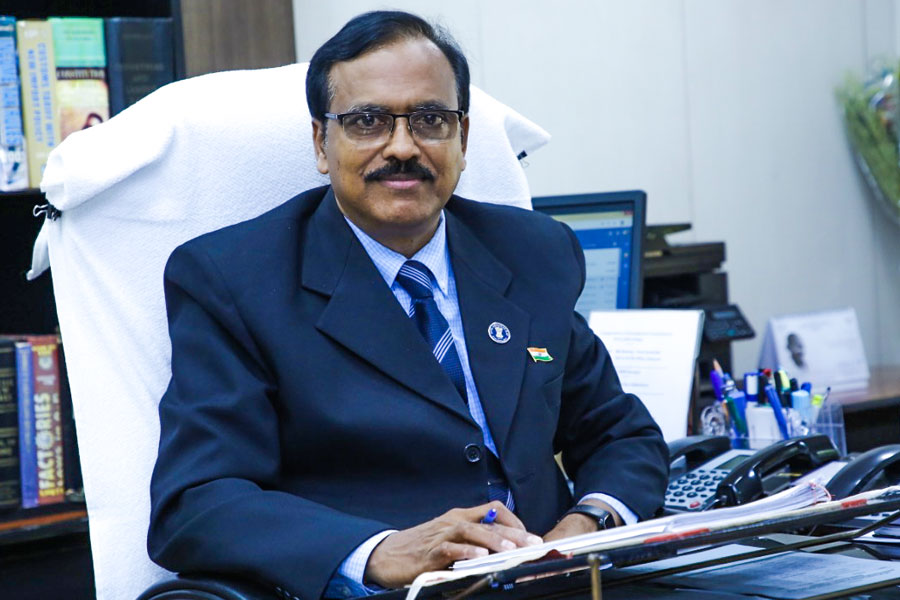SEZs: The engines of India’s economic growth
ARM Reddy, Zonal Development Commissioner, Vishakhapatnam opines that operational SEZs in India have propelled its exports, boosted investments and generated employment opportunities as minimum investments with less compliance burden became a win-win to all the stakeholders.

Special Economic Zones (SEZs) have played an integral role in India’s export performance over the years. While the idea was formalised through the drafting and legalisation of the SEZ Act in 2005, in practice, the roots of the idea can be traced back to 1965, with the operationalisation of Kandla Export Processing Zone, the first of its kind in Asia. SEZs have helped in building world class infrastructure in India and acted as growth poles in their locations. Hence, today, India is in the third position in the world with respect to SEZs, after China and Philippines.
The 265 operational SEZs in India have propelled its exports, boosted investments and generated employment opportunities as minimum investments with less compliance burden became a win-win to all the stakeholders. To put things in perspective, the share of SEZs exports in India’s total exports has increased from 26.10% in 2009-10 to 30.38% in 2018-19.
Thus, exports from SEZs grew at a phenomenal compounded annual growth rate (CAGR) 12.15%, overshadowing the 10.56% growth rate of total exports of India during the same period. The Vishakhapatnam SEZ, for example, registered a remarkable growth of 220 times exports in just 16 years from 2003 to 2019. In just two months and 10 days in 2021-22, we have recorded an increase of 32% in merchandise and 13% in services with an average growth of 19% compared to last year, with our exports amounting to INR 16,400 crores.
Prior to the pandemic, SEZs in the country earned Rs 7.22 lakh crores foreign exchange, and provided direct employment to 22.15 lakh, with an investment of Rs. 5.75 lakh crores during 2019-20. While the pandemic took a toll on India’s SEZ export performance, dropping to Rs. 5.53 lakh crores during 2020-21, I’m confident that SEZs will be the driving force steering the country to a post-pandemic recovery. At the same time, it is worth noting that even at its worse, the country’s SEZ exports in 2020-21 were 24 times higher to those in 2005-06 (Rs 22,840 crores).
Furthermore, I would like to add one critical point. Industry must not carry the perception that SEZs are not suitable for SMEs. In fact, SMEs are being set up very well in all the SEZs. For example, we have got built up spaces in Vishakapatnam SEZ. Recently, an electric scooter assembly unit came to the SEZ. They have taken just 1,000 square feet area and were planning to place only 20 people. They wanted to import all the batteries and everything from Australia, make the chassis here and then assemble it, and again, re-export to Australia. So we have got sheds here of 1,000 square feet, and the charges are so low that it’s not even comparable to the residential accommodations that people take outside the zones.
Exports bring employment
While SEZs in the country have performed fairly well since their inception, there’s still room for their improvement. With the objective of moving from islands of exports to catalysts of economic and employment growth in a manner compatible with the WTO norms, the Baba Kalyani Committee proposed to rename SEZs as– Employment and Economic Enclaves (3Es). This, it was supposed, will also enable these enclaves to drive focus on creating an ecosystem for manufacturing competitiveness and efficient supply chains.
The government, however, felt that globally all export zones are called SEZs. It advised the committee not to change the name, but agreed to the idea behind the 3Es. Further, renaming would change the perception of identity of SEZs. Orienting them entirely on employment is like shifting the goal post.
As suggested by them, the focus should be for economic activity and employment generation, but export was the basic idea behind setting up all the zones and giving all subsidies, giving duty benefits, etc to encourage units and developers to enhance exports. We need not emphasize this. Employment will get generated automatically as the production goes up, exports goes up. Even in the pandemic period, employment from V SEZ has increased by 10%. Every year it has gone up, except for a month or so and presently the V SEZ employs around four lakh people.
ARM Reddy, IFS, is Zonal Development Commissioner, Vishakhapatnam. Views expressed are personal. Usual disclaimers apply.













Leave a comment